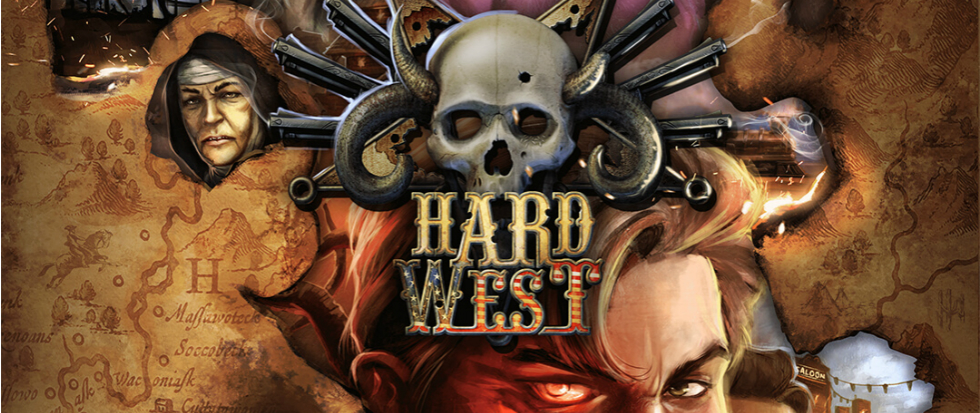
No Bright Side: Crimewave (1985) on Blu-ray
“Don’t you ever call me a maniac!”
In many ways, Crimewave is the kind of movie I live for: a bonkers, underseen, early-career flick from legendary filmmakers who went on to much bigger (and, in some cases, better) things. In this instance, those filmmakers are the Coen Brothers (who have co-writer credit on Crimewave, which was released just one year after their breakout film Blood Simple) and Sam Raimi, who directs and gets the rest of the writing credit.
At this particular moment in history, Raimi might have been the bigger name. He was in-between the release of Evil Dead (four years earlier) and Evil Dead II (two years later), while the Coens were still more than a decade out from their first Academy Award. One of the Coens had worked as an editor on Evil Dead, where they struck up a relationship with Raimi. In some ways, it makes sense. While Raimi has achieved notoriety as a cult horror director and the Coens have gone on to tuck numerous Oscars under their belts, there is a similar sensibility at play, and it’s hard, at times, to ferret out which bits of Crimewave are Raimi and which bits might be the Coens.
Crimewave was Raimi’s first film with a studio, and it shows. Not in any curtailing of Raimi’s stylistic excesses – if anything, Crimewave may be his most stylized film, something like a live-action Looney Tunes cartoon – but in a variety of other places, from its numerous alternative titles (the Blu from Indicator has versions bearing both the XYZ Murders and Broken Hearts and Noses monikers) to the recasting of the lead from frequent Raimi collaborator Bruce Campbell to “Hollywood” actor Reed Birney, who had, at the time, appeared in hardly more features than Campbell himself.
It’s obvious, watching the film, that the role of the hapless Victor Ajax was written for Campbell. However, when the studio pushed Campbell out, Raimi retaliated by expanding the role of sleazy lothario Renaldo “The Heel” and giving it to Campbell instead. While he spends less time on screen than Ajax, Renaldo is possibly more fun for Campbell than the lead would have been, giving him the opportunity to do finger guns that actually make bullet noises, and blow smoke rings that turn into the silhouette of a stripper.
Really, though, the whole movie is like that – an endless series of sight gags and cartoon sound effects. At one point, an attacker is driven back and slumps down against a wall, whereupon three bowling balls, which were shelved on the wall above him, roll off, striking him on the head one by one. (Because, when you store bowling balls, you definitely put them loose up on a high shelf, and any small apartment that only houses two people absolutely needs three bowling balls where you can reach them easily at a moment’s notice.)
While the Three Stooges slapstick is pure Raimi, the cartoonish pair of human exterminators (“We kill all sizes”) are very much the Coen Bros. contribution to this weird cocktail. One is played by Blade Runner’s Brion James, who sounds like he’s been huffing helium here. The other is a hulking bruiser with a voice like Bobcat Goldthwait – it should come as no surprise that Paul Smith, the actor who plays him, also played Bluto in Altman’s Popeye five years earlier. I kept expecting his character here to threaten to knock Popeye’s block off, even before I knew that was him.
(According to Bruce Campbell’s autobiography, Brion James trashed his hotel room during filming as part of an attempt to “exorcise a ghost from his light fixtures.” Cocaine may or may not have been involved. *)
While Raimi was initially given free reign, the production soon went over budget and the studio stepped in, leading to conflicts between Raimi and the studio. “It was such a horrible, horrible, horrible, depressing scene,” Raimi later commented. With a budget of $2.5 million (which it rapidly eclipsed), the film brought in a box office of only a little over $5,000 – and no, I didn’t forget any decimals.
According to Campbell’s autobiography, the film was screened only in Santa Cruz, Alaska, and Kansas, of all places, so that it would be eligible for release on HBO. To further confuse an already troubled production, the picture was slapped with yet more titles when it was exported overseas, including The Two Craziest Killers in the World when it was released in Italy and the nonsensical Death on the Grill in France.
Ironically, we might have the failure of Crimewave to thank for a lot of movies that are much more beloved (and better). It was desperation following the tanking of Crimewave that drove Raimi to do the “safe” thing and make Evil Dead II, while their dissatisfaction with this flick has been credited with inspiring the Coen Brothers to direct all their own screenplays for the next three decades, give or take.
Ultimately, your desire to actually watch Crimewave will likely come down to your interest in and affection for the filmmakers, while your appreciation for Crimewave will depend upon how heavily you identify with the following statement: “I wish that film noir movies could also be Bugs Bunny cartoons.”
In either event, if you do decide to watch, you could do a lot worse than the Indicator Blu-ray. And, given the relative scarcity of this flick over the years, you might not be able to do much else. The Indicator release is region B only, though, so you’ll need a region-free player if you live in the States.
* This could honestly be a summation of just about every aspect of the picture.





